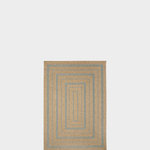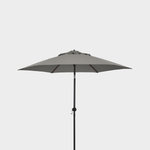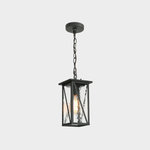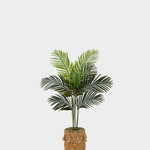Landscape Design
Native Plants
Yard of the Week: Entry Garden Welcomes Neighbors and Wildlife
This petite front yard in Los Angeles loses the lawn in favor of low-water native plants and a cozy outdoor seating area
In their renovated front yard in South Pasadena, California, Jennifer and Marc Trotoux can now relax and enjoy their new native garden, which they can also appreciate from their living room and front porch. Spending time in their front yard also has become a way for them to meet and greet neighbors.
The homeowners say their new garden encourages lots of friendly interactions with their neighbors, who like to ask questions and share how much they appreciate the new design. “A few tell us that their dogs always like to walk by to get a drink at the fountain, which leads to more visits and chats,” Jennifer says.
The homeowners say their new garden encourages lots of friendly interactions with their neighbors, who like to ask questions and share how much they appreciate the new design. “A few tell us that their dogs always like to walk by to get a drink at the fountain, which leads to more visits and chats,” Jennifer says.
Before: Scott describes the previous yard as minimalistic, with a traditional lawn filling most of the space. The yard also included a couple of small shrubs, a mature crape myrtle (Lagerstroemia indica) and a ‘Cécile Brunner’ climbing rose (Rosa ‘Cécile Brunner’) along the front porch. The latter two were preserved in the redesign.
The homeowners wanted to remove the existing lawn, replacing it with a low-water garden filled with plants more suitable for Southern California’s dry climate. “The owners were already native-plant enthusiasts and had gardened with natives at their previous home,” Scott says. “They were also committed to other sustainable practices and wanted any hardscape to be permeable where possible.”
The homeowners wanted to remove the existing lawn, replacing it with a low-water garden filled with plants more suitable for Southern California’s dry climate. “The owners were already native-plant enthusiasts and had gardened with natives at their previous home,” Scott says. “They were also committed to other sustainable practices and wanted any hardscape to be permeable where possible.”
After: A rectangular seating area with chairs and a new custom fountain anchors the front yard. Scott chose decomposed granite (DG) for the hardscape, for its permeability. “[Its] relatively low cost was a bonus,” she adds.
Scott pulled the patio slightly away from the sidewalk to give the homeowners a little more privacy from the street. She also surrounded the DG patio with midsize plantings mixed with low plantings, to create a more nestled, secluded feel. The crape myrtle overhead adds to the feeling of enclosure. The patio is “usually the one sunny spot to sit and read the newspaper,” Scott says.
Scott pulled the patio slightly away from the sidewalk to give the homeowners a little more privacy from the street. She also surrounded the DG patio with midsize plantings mixed with low plantings, to create a more nestled, secluded feel. The crape myrtle overhead adds to the feeling of enclosure. The patio is “usually the one sunny spot to sit and read the newspaper,” Scott says.
Need a pro for your landscape design project?
Let Houzz find the best pros for you
Let Houzz find the best pros for you
Landscape contractor Hernan Quezada turned a glazed pot the homeowners already owned into a “disappearing” water feature in the patio’s center. “It serves as a relaxing element and attracts birds,” Scott says.
Poured-in-place concrete pavers meander from the seating area to the sidewalk and front door — especially useful during wet weather and on damp mornings. The pavers add structure and tidiness to the loose, naturalistic design, but they don’t feel formal. In fact, Scott aimed to convey a relaxed feel with the steps to also reflect how the Craftsman aesthetic represented a more casual approach to design after the Victorian era.
Shop for fountains on Houzz
Poured-in-place concrete pavers meander from the seating area to the sidewalk and front door — especially useful during wet weather and on damp mornings. The pavers add structure and tidiness to the loose, naturalistic design, but they don’t feel formal. In fact, Scott aimed to convey a relaxed feel with the steps to also reflect how the Craftsman aesthetic represented a more casual approach to design after the Victorian era.
Shop for fountains on Houzz
After: With the plant palette, “we had in mind movement — of the grasses in the wind and the motion of a fountain — and smell,” Scott says. ‘Winnifred Gilman’ Cleveland sage (Salvia clevelandii ‘Winnifred Gilman’) infuses this garden with its fragrance of California terroir. “Its scent has become a distinct feature of the yard,” Scott says.
Massed plantings of field sedge (Carex praegracilis), a California and North American native, add movement to the yard and serve as a low-water alternative to a traditional lawn. The sedge’s tolerance of full sun and light shade also suits this yard, which experiences a range of sun exposures.
How to Find the Right Native Plants for Your Yard
Massed plantings of field sedge (Carex praegracilis), a California and North American native, add movement to the yard and serve as a low-water alternative to a traditional lawn. The sedge’s tolerance of full sun and light shade also suits this yard, which experiences a range of sun exposures.
How to Find the Right Native Plants for Your Yard
Island alumroot (Heuchera maxima), shown here, produces small pink flowers from late winter into spring. “Like most California native gardens, this one is at its peak in spring. It does look good year-round however, and avoids the drought-deciduous look. The year-round green of the ceanothus and some of the taller grasses keep it looking fresh all year,” Scott says.
Other native and wildlife-attracting plants in the design include ‘Carmel Sur’ manzanita (Arctostaphylos edmundsii ‘Carmel Sur’), ‘Yankee Point’ California lilac (Ceanothus griseus var. horizontalis ‘Yankee Point’), ‘Concha’ California lilac (Ceanothus ‘Concha’), dudleya (Dudleya brittonii), red-flowered buckwheat (Eriogonum grande var. rubescens), ‘Elk Blue’ California gray rush (Juncus patens ‘Elk Blue’), ‘Canyon Prince’ wild rye grass (Leymus condensatus ‘Canyon Prince’), sticky monkey flower (Mimulus aurantiacus) and foothill penstemon (Penstemon heterophyllus ‘Margarita BOP’).
Other native and wildlife-attracting plants in the design include ‘Carmel Sur’ manzanita (Arctostaphylos edmundsii ‘Carmel Sur’), ‘Yankee Point’ California lilac (Ceanothus griseus var. horizontalis ‘Yankee Point’), ‘Concha’ California lilac (Ceanothus ‘Concha’), dudleya (Dudleya brittonii), red-flowered buckwheat (Eriogonum grande var. rubescens), ‘Elk Blue’ California gray rush (Juncus patens ‘Elk Blue’), ‘Canyon Prince’ wild rye grass (Leymus condensatus ‘Canyon Prince’), sticky monkey flower (Mimulus aurantiacus) and foothill penstemon (Penstemon heterophyllus ‘Margarita BOP’).
Scott extended the field sedge (Carex praegracilis) and meandering paver path across the sidewalk and into a narrow parking strip in front. “With a smaller garden, I like to treat the parkway as an extension of the main front yard, to make the whole garden feel larger,” she says. The pavers give pedestrians a path to and from their cars.
A permeable ribbon of sedge and rock now runs down the center of the homeowners’ driveway, replacing what had been a solid concrete pad. The strip beautifies the driveway, which sits adjacent to the front yard, and allows driveway runoff to filter directly back into the ground, rather than flowing into local storm drains.
Scott used a mix of stone sizes and gravel to improve drainage and create a more natural dry-creek look. “If you use only large cobbles, you won’t get much water seeping into the soil, and the look is less natural as well,” she says. “The gravel should be sized large enough so that it doesn’t slosh everywhere. We find a three-quarter-inch size is heavy enough to stay put. We also specify that the level of the gravel be a half-inch below any adjacent hardscape to help keep it in place,” Scott says.
How to Manage Stormwater in Your Landscape
Scott used a mix of stone sizes and gravel to improve drainage and create a more natural dry-creek look. “If you use only large cobbles, you won’t get much water seeping into the soil, and the look is less natural as well,” she says. “The gravel should be sized large enough so that it doesn’t slosh everywhere. We find a three-quarter-inch size is heavy enough to stay put. We also specify that the level of the gravel be a half-inch below any adjacent hardscape to help keep it in place,” Scott says.
How to Manage Stormwater in Your Landscape
New outdoor lighting extends front yard enjoyment into the evenings. Instead of filling the space with spotlights and uplights, the team aimed to minimize light pollution and nocturnal wildlife disturbance with low path lights and lights with shades. “We added lovely hanging lights in the crape myrtle that cast a soft, twinkly glow to the garden at night, and path lighting for safety,” Scott says.
Landscape lighting: FX Luminaire
Landscape lighting: FX Luminaire




















Yard at a Glance
Who lives here: Jennifer and Marc Trotoux and their two school-age sons
Location: South Pasadena, California
Landscape architect: June Scott
Landscape contractor: Hernan Quezada
Jennifer and Marc wanted the yard design to be in sync with the environment and work with the site conditions and regional climate. Landscape architect June Scott, whom the couple hired to handle the renovation, specializes in ecologically sustainable outdoor projects in the Los Angeles area. Looking on Houzz for inspiring photos of outdoor living spaces and native-plant ideas, they and Scott developed a cohesive plan.
It was also important to the homeowners that their front yard complement their home’s Craftsman architecture. “Jennifer is an architectural historian and curator at the Gamble House. She was also on the board of the California Landscape and Garden History Society, so she knows her Craftsman architecture and landscape architecture,” Scott says.
Work with a landscape designer on Houzz